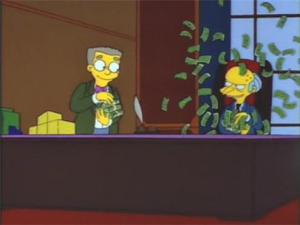Pros: Claes Bang as Dracula; elements from Bram Stoker’s book combined with new plot twists; unpredictability Cons: sometimes makeup lets you down; the series cannot decide either in the direction of sarcasm or in the direction of horror “Dracula” / Dracula
Genre Drama, Horror
Creators Mark Gatiss, Steven Moffat
Cast: Claes Bang (Count Dracula), Dolly Wells (Sister Agatha), John Heffernan (Jonathan Harker), Morved Clarke (Mina Harker), Joanna Scanlan (Mother Superior), Louise Richter (Elena), Jonathan Aris (Captain Sokolov) , Sasha Dhawan (Dr. Sharma), Nathan Stewart-Jarrett (Adisa), Clive Russell (Valentine), Katherine Schell (Duchess Valeria), etc.
Channel BBC One, Netflix
Year of release 2020
Episode 3
Site IMDb
Mark Gatiss and Steven Moffat are British showrunners who took advantage of Benedict Cumberbatch’s acting charisma and successfully rebooted the story of Sherlock Holmes. Having released four detective seasons, Gatiss and Moffat switched to another project, which was again based on a famous work.
Bram Stoker’s Dracula has been interpreted and filmed countless times, so for a fresh production the showrunners needed to rewrite the famous story and embellish it with never-before-seen intrigue. Gatiss and Moffat have long honed their skills on this, so they showed the familiar details of a vampire romance, to which the screenwriters famously added new meanings and plot twists.
The desire of the creators to adhere to the main accents from the original and at the same time build a completely different story is palpable from the first minutes of the series. The first episode begins with the confession of a lawyer named Jonathan, who, with the help of the nun Agatha, restores his memories. He tries to remember how he managed to escape from Count Dracula’s castle, where the lawyer turned from a guest into an unfortunate prisoner. At first, the owner of the fortress did not pose a threat, seeming only to be a frail old man, but over time the nobleman became younger, and Jonathan, who was next to him, inexplicably weakened. In what happened, the nun Agatha finds interesting details that John is not yet paying attention to.




For a while, Dracula only shadows the story, which we piece together, trying to understand what the problem is. When the viewer’s guard is down, the Count instantly fills the plot, demonstrating the traits that Gatiss and Moffat endowed the vampire with.
Played by Danish actor Claes Bang (played in the films The Square and The Girl in the Spider’s Web), Dracula retains his polished aristocratic manners. They are also accompanied by persistence, arrogance and a strong desire for physicality. Claes Bang involves himself in all the slippery (literally) experiments that the creators of the series offer him, and looks convincing everywhere.




Also in the spotlight is actress Dolly Wells (known for the British sitcom Blunt Talk), who plays the nun Agatha. At first, her character seems to be just a guide through the overall story, but over time, Dolly Wells fully comes into play on the same level as Claes Bang.
And, of course, there is a cameo appearance by Mark Gatiss himself, who indulges in the pleasure of playing characters from the script he wrote. Previously, Gatiss happily played the role of Sherlock Holmes’ brother, but in Dracula he chose to take on a less important but witty supporting role.



A share of humor is indeed present in each episode, reminiscent of the work style of the showrunners, who have their own view on the interpretation of the classics. What is noteworthy is that the creators remained faithful to other techniques from Sherlock, so in Dracula there are unexpected plot twists that turn the course of events upside down.
It is worth admitting that watching the vampire story of Gatiss and Moffat is interesting; if you have free time, the mini-series can be completed in one day. However, after finishing Dracula, there is a feeling that in everything we saw there is not enough greatness for the series to be included in the list of successful works.



Perhaps this is due to the fact that “Dracula” balances between light mockery and frightening horror, without really plunging into either horror or a sarcastic atmosphere. Or, perhaps, because the makeup and other elements of intimidation look too unconvincing, and sometimes even theatrical.
In addition, there is a sudden change in atmosphere in Dracula, which can also affect the perception of the series. Although it’s not worth writing down as a minus, rather as an original attempt to expand the story of the bloodsucker (and at the same time lay the foundation for the second season).
Conclusion:
in “Dracula” the signature style of Mark Gatiss and Steven Moffat is recognizable. They come up with an interesting vampire interpretation, but it’s not brilliant.


